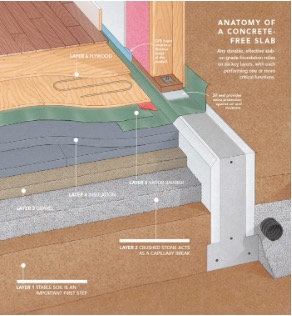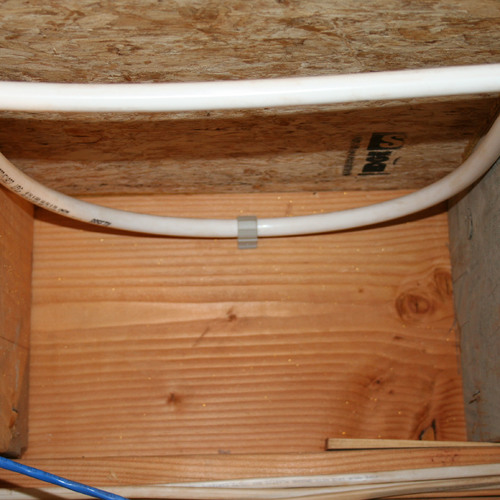
Four years ago, I completed construction of a high-performance, all-electric home in Northern Michigan (IECC climate zone 6A). I’ve been living here with my family full time since then and it has provided a great opportunity to reflect on what we would do differently were we to do it again. I came up with a list of six things.
1. Attach the garage
In the middle of winter in cold climates there’s something to be said about pulling into a garage and walking right into your house instead of going back outside again. It is a huge plus, particularly in the winter when bundling up young kids or unloading groceries.
But I was sweating over the risks from car exhaust and chemicals being pulled into the house. I was also worried about energy performance and thermal bridging from some of the structural components.
However, these are manageable with diligent air-sealing, treating the demising wall as an exterior wall, and utilizing a whole-house ventilation system. If I were to do it again, I would attach the garage directly or through a breezeway.
2. Prioritize embodied carbon
When designing the house, I was aware of upfront carbon but didn’t prioritize it—I had tunnel vision on operational carbon. Since then, I’ve seen some compelling analyses showing there’s a significant carbon debt to pay off on day one from the embodied carbon, and it may not be easily paid off with operational carbon savings over the lifetime of the building.

If I were to do it again, I would identify and implement carbon reducing strategies using the BEAM estimator. I would expect the analysis to be consistent with other homes that show concrete foundations as the largest contributor. Since I built my house, I’ve been really drawn to concrete-free (or…
Weekly Newsletter
Get building science and energy efficiency advice, plus special offers, in your inbox.

This article is only available to GBA Prime Members
Sign up for a free trial and get instant access to this article as well as GBA’s complete library of premium articles and construction details.
Start Free TrialAlready a member? Log in












6 Comments
Attached Garage - One could build an enclosed portico (or three-season) between the garage and the house. In your case, I would have fliped the house or build the garage on the kitchen side for easy entrance.
In our zoning, that side yard garage would be required to be attached, but a breezeway (enclosed or open) fits the letter of the law for attachment. I'm planning a rear yard detached garage to save the cost of a breezeway retrofit to the existing house....
Armando + Chris,
Trying to help a recently widowed friend sell her husbands vehicles, I wandered down to a nearby house I had never been to and found a beautifully designed garage and breezeway. The last four feet of the garage facing the covered area was a separate room with large barn doors, which when open revealed a seating area and barbecue. The breezeway transformed into a covered outdoor social space, which totally disappeared when the doors were closed again.
Nathan,
Thanks for this. We rarely get feedback on how things turn out. I'm particularly cheered by your last paragraph. Enjoy your house!
I built a 2-1/2 car garage with a primary suite above attached to our existing house.
To remove exhaust fumes from a car we installed a bath fan in the ceiling that is wired to the garage door opener so when the garage door opens, and a car pulls in the bath fan turns on and continues to run for 5 minutes after the door is closed. The fan can be turned on and off by a separate switch if need be.
The entire garage is fully insulated as is the ceiling/primary suite floor and is heated by a small stand alone forced air/hot water heater that is placed high up on a wall, the 7 day programable thermostat is also placed high up on the wall and is programed to heat up the garage to 60 degrees between 10 am and 3 pm to take advantage of the hot water that is made by the evacuated tube solar hot water system on the roof instead of the propane boiler.
The point of putting the heater and thermostat high up was to try to heat only the upper 2’ feet of the garage space and keep the floor of the master suite above warm in winter.
I know this is a pretty geeky system, to program the thermostat or change its batteries I have to climb up a 6’ step ladder which most people would be unwilling to do. I’m sure when I sell the house at some point in the future the next owner will be dumbfounded by this set up.
High Performance tipple pane window doors are heavy, I would delete the tilt function on all such doors. Put a retractable screen and open the door if you want lots of ventilation, otherwise leave the door close or have a nearby window that is operable.
This makes the use of the door simpler and less likely hood of the open / tilt mechanism breaking.
Log in or become a member to post a comment.
Sign up Log in